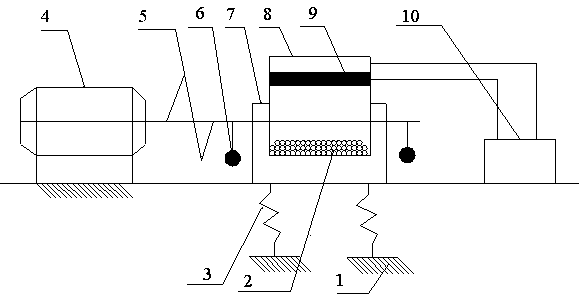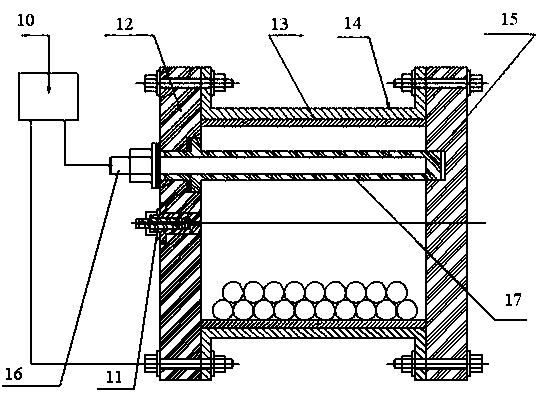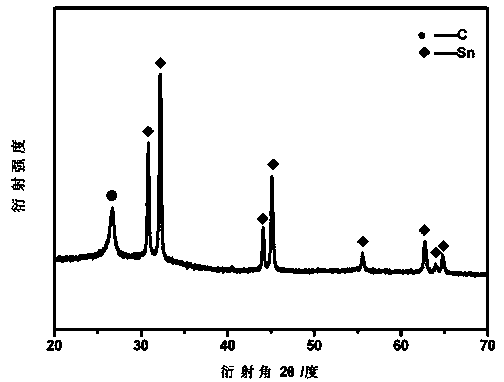Preparation method of tin carbon composite material for negative electrode of lithium ion batteries
A lithium-ion battery and tin-carbon technology, applied in battery electrodes, circuits, electrical components, etc., can solve the problems of sacrificing the overall specific capacity and increasing the first irreversible capacity, so as to reduce the irreversible capacity, improve the charge and discharge efficiency, and reduce the degree of damage Effect
- Summary
- Abstract
- Description
- Claims
- Application Information
AI Technical Summary
Problems solved by technology
Method used
Image
Examples
Embodiment 1
[0041] After mixing the tin raw material and the graphite raw material powder, the mass ratio of the carbon raw material to the total raw material is 30%. According to the above ball milling method, the tin-carbon mixed powder after ball milling was obtained, the discharge gas medium is argon, the ball powder mass ratio of the ball and the mixed powder is 30:1, and the ball milling time is 2.5h; then according to the above battery test conditions And steps for charge and discharge test, the first reversible capacity of the prepared Sn-30wt%C composite material is 613mAh / g.
Embodiment 2
[0043] The method of dielectric barrier discharge plasma-assisted ball milling is used to prepare tin-carbon composite materials for lithium-ion battery negative electrodes. The steps are basically the same as in Example 1, except that the raw materials are proportioned according to Sn-Xwt%C, where the value of X For X=50, the mass ratio of the ball powder to the mixed powder is 40:1, and the ball milling time is 5h. The above powders were made into electrode sheets and batteries were assembled for charge and discharge tests. The first reversible capacity of the prepared Sn-50wt%C composite was 480mAh / g.
Embodiment 3
[0045] The method of dielectric barrier discharge plasma-assisted ball milling is used to prepare tin-carbon composite materials for lithium-ion battery negative electrodes. The steps are basically the same as in Example 1, except that the raw materials are proportioned according to Sn-Xwt%C, where the value of X For X=50, the mass ratio of the ball powder to the mixed powder is 50:1, and the ball milling time is 7.5h. The above powders were made into electrode sheets and batteries were assembled for charge and discharge tests. The first reversible capacity of the prepared Sn-50wt%C composite was 497mAh / g.
PUM
 Login to View More
Login to View More Abstract
Description
Claims
Application Information
 Login to View More
Login to View More - R&D
- Intellectual Property
- Life Sciences
- Materials
- Tech Scout
- Unparalleled Data Quality
- Higher Quality Content
- 60% Fewer Hallucinations
Browse by: Latest US Patents, China's latest patents, Technical Efficacy Thesaurus, Application Domain, Technology Topic, Popular Technical Reports.
© 2025 PatSnap. All rights reserved.Legal|Privacy policy|Modern Slavery Act Transparency Statement|Sitemap|About US| Contact US: help@patsnap.com



